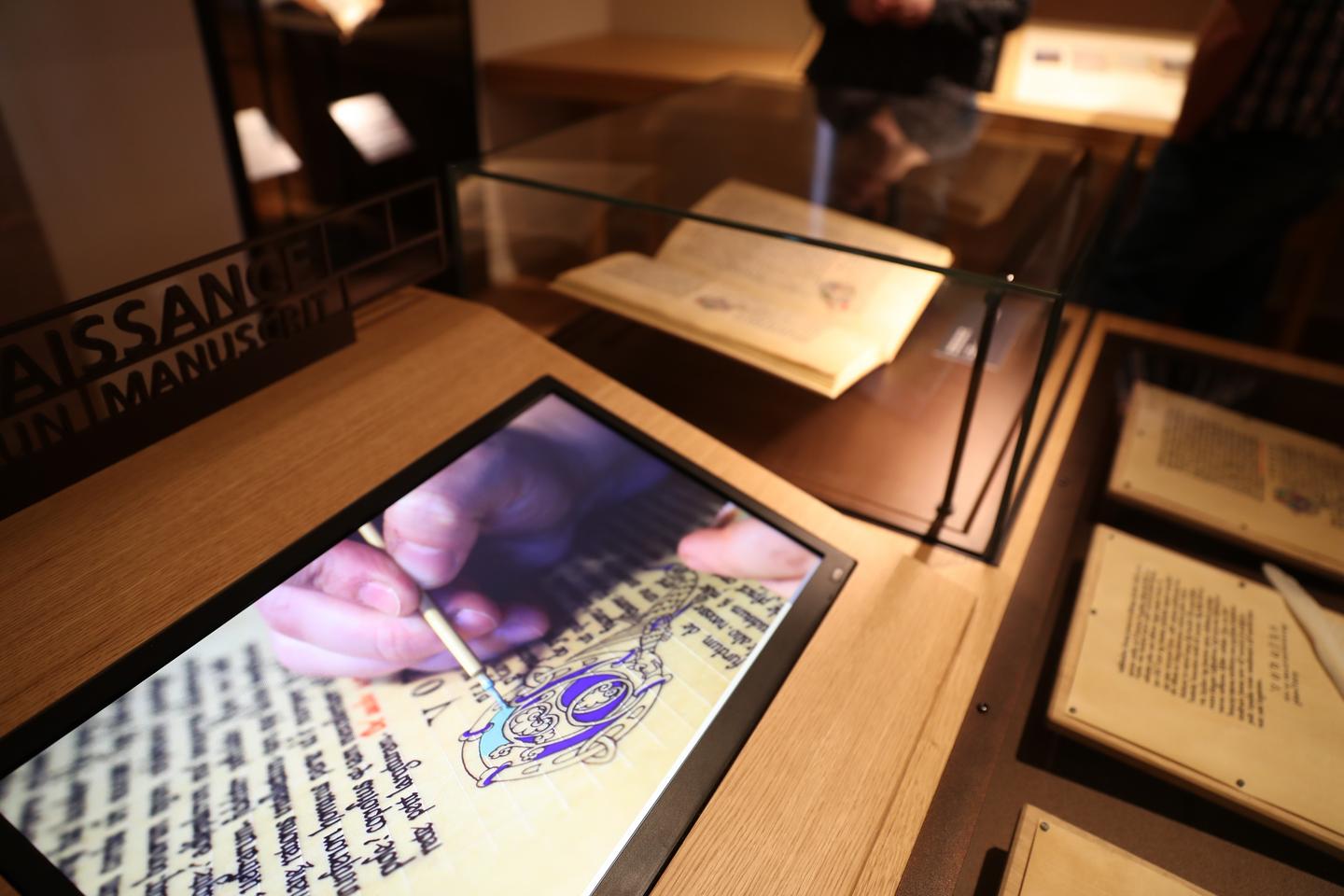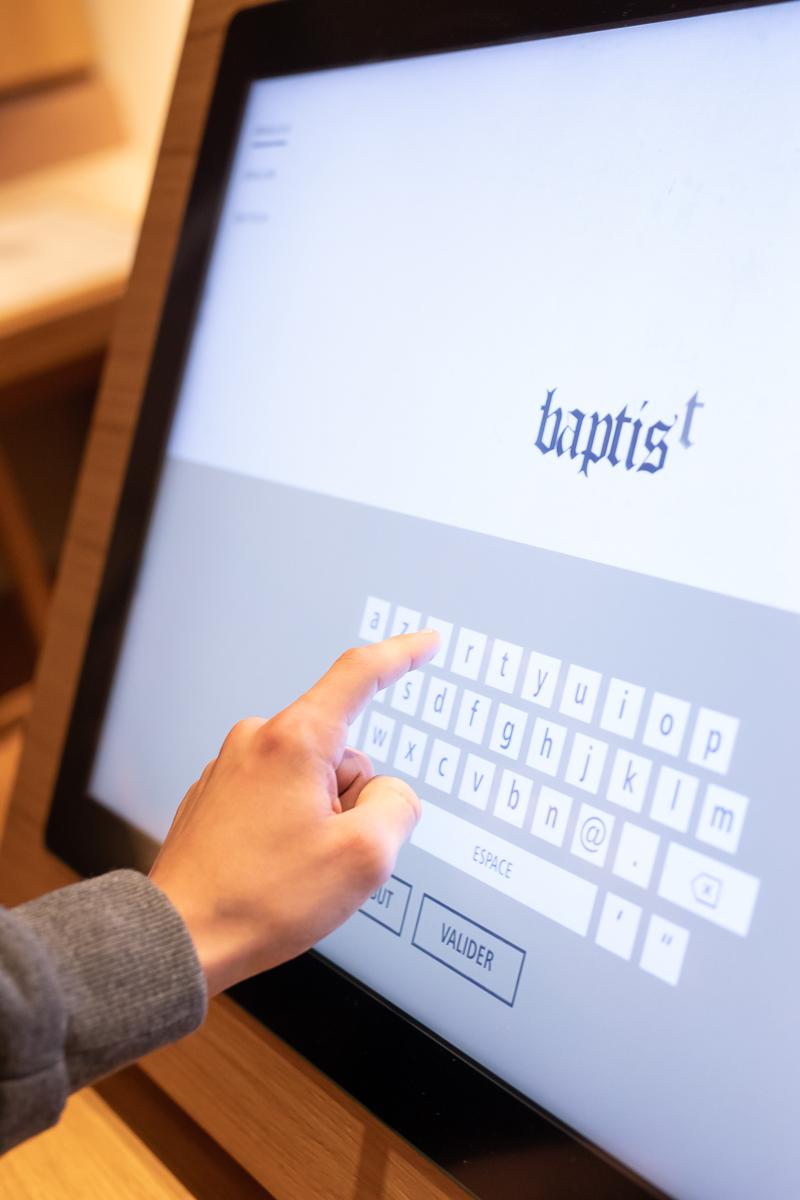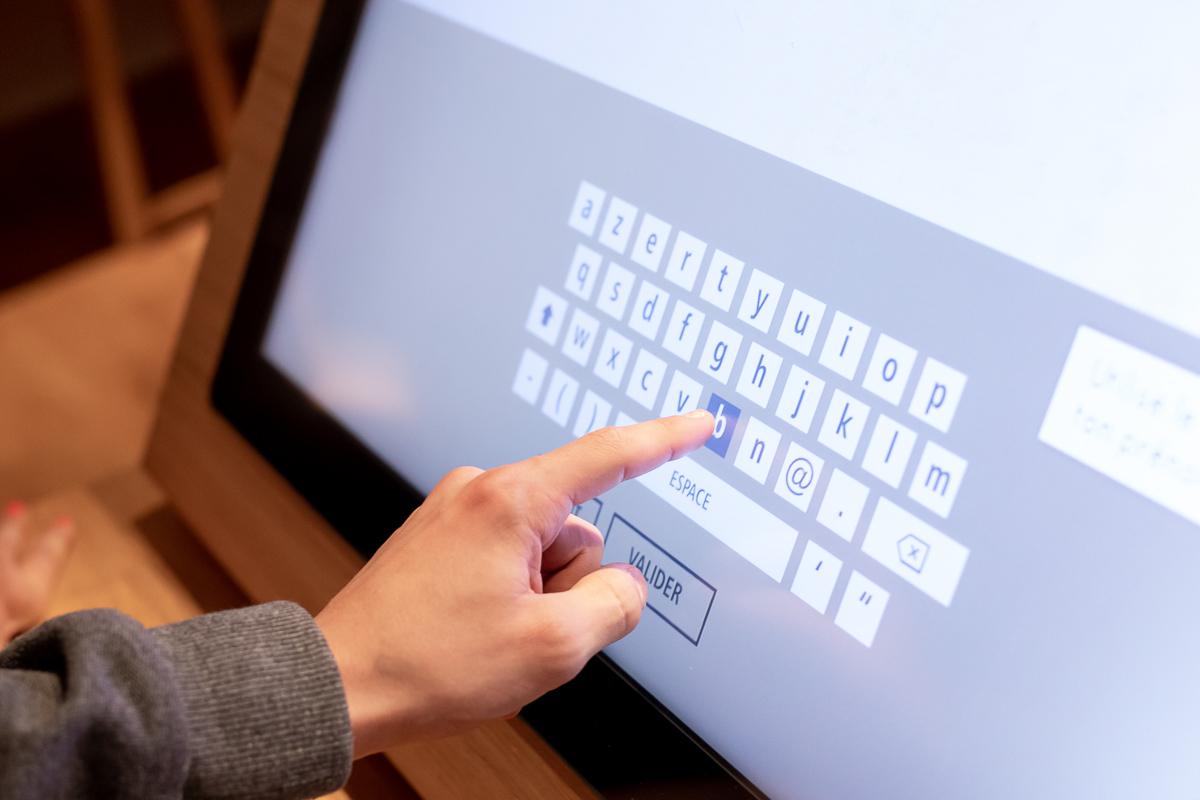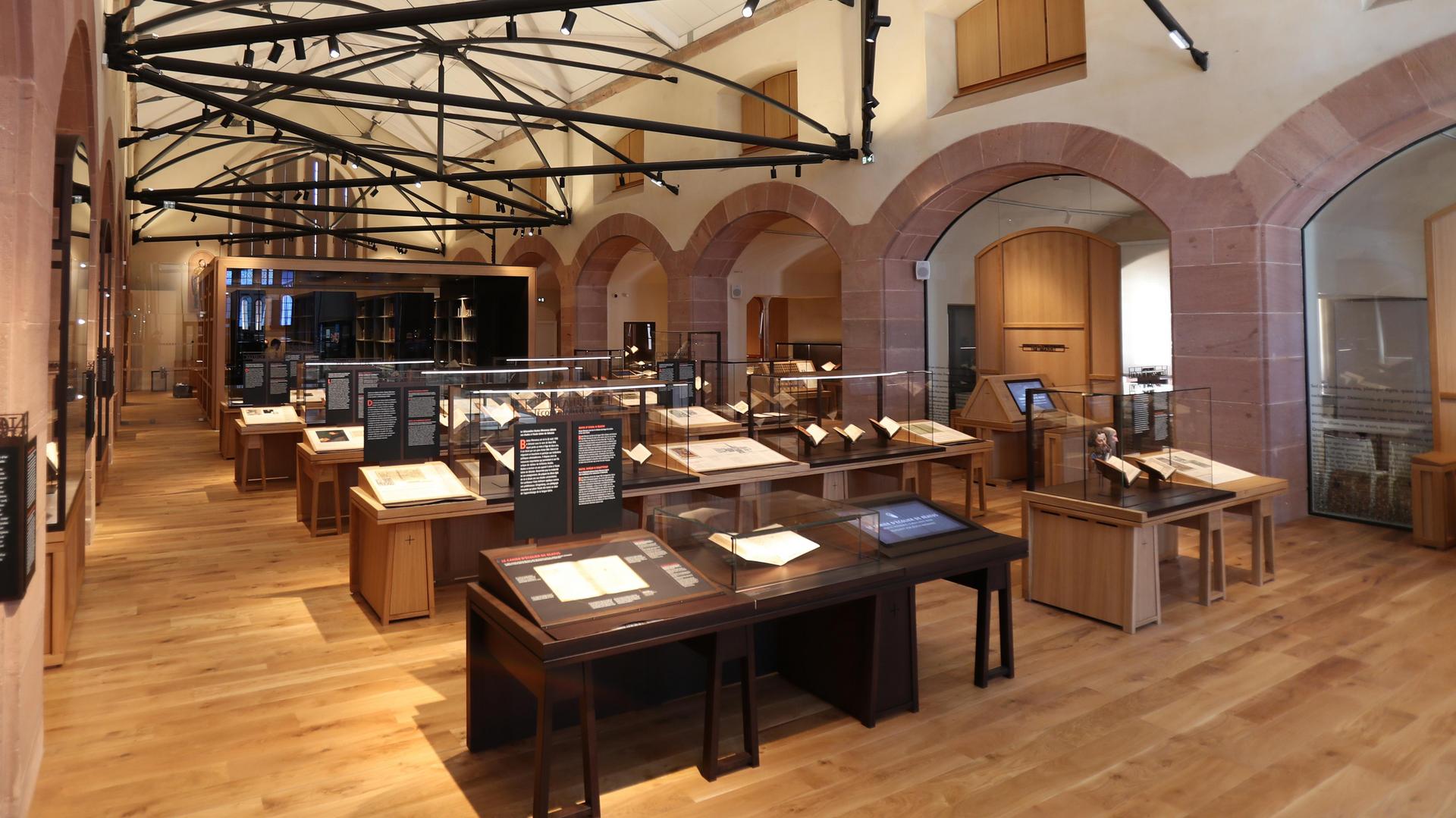
Following in the footsteps of humanist scholar Beatus Rhenanus, the visitor route provides an introduction to the unique collections of the Bibliothèque Humaniste.
The central section of the permanent exhibition focuses on the intellectual career of Beatus Rhenanus, a Sélestat native, prominent humanist and friend of Erasmus, who left his extraordinary personal library to his home town upon his death in 1547. Taken together, these 670 works form one of the richest Renaissance collections to have survived intact.
Here you can discover books and objects retracing the life of this famous humanist, for example his old school book from his time at the Latin School.
The Special Reserve section of the Bibliothèque Humaniste, containing some 154 medieval manuscripts and 1611 printed works from the 15th and 16th centuries, is best explored book by book, theme by theme. This striking glass cube houses the most precious items from the library’s collections.
Thanks to a new digital system, you can delve deep into this treasure and flick freely through books that have now been digitised.
The city of Sélestat enjoyed a golden age during the Renaissance, a prosperity made possible by the town's medieval heritage. The town’s wealth is reflected in the array of archaeological treasures on show here, and represented in the various maps and interactive models.
This room also contains archaeological artefacts discovered during excavations at the Bibliothèque Humaniste.
The Renaissance was a time of rapidly-expanding knowledge, marked by the discovery of new, hitherto unexplored worlds. The seismic impact of these discoveries, made possible by scientific advances, is reflected in the Introduction to Cosmography, which includes the first recorded use of the name ‘America’.
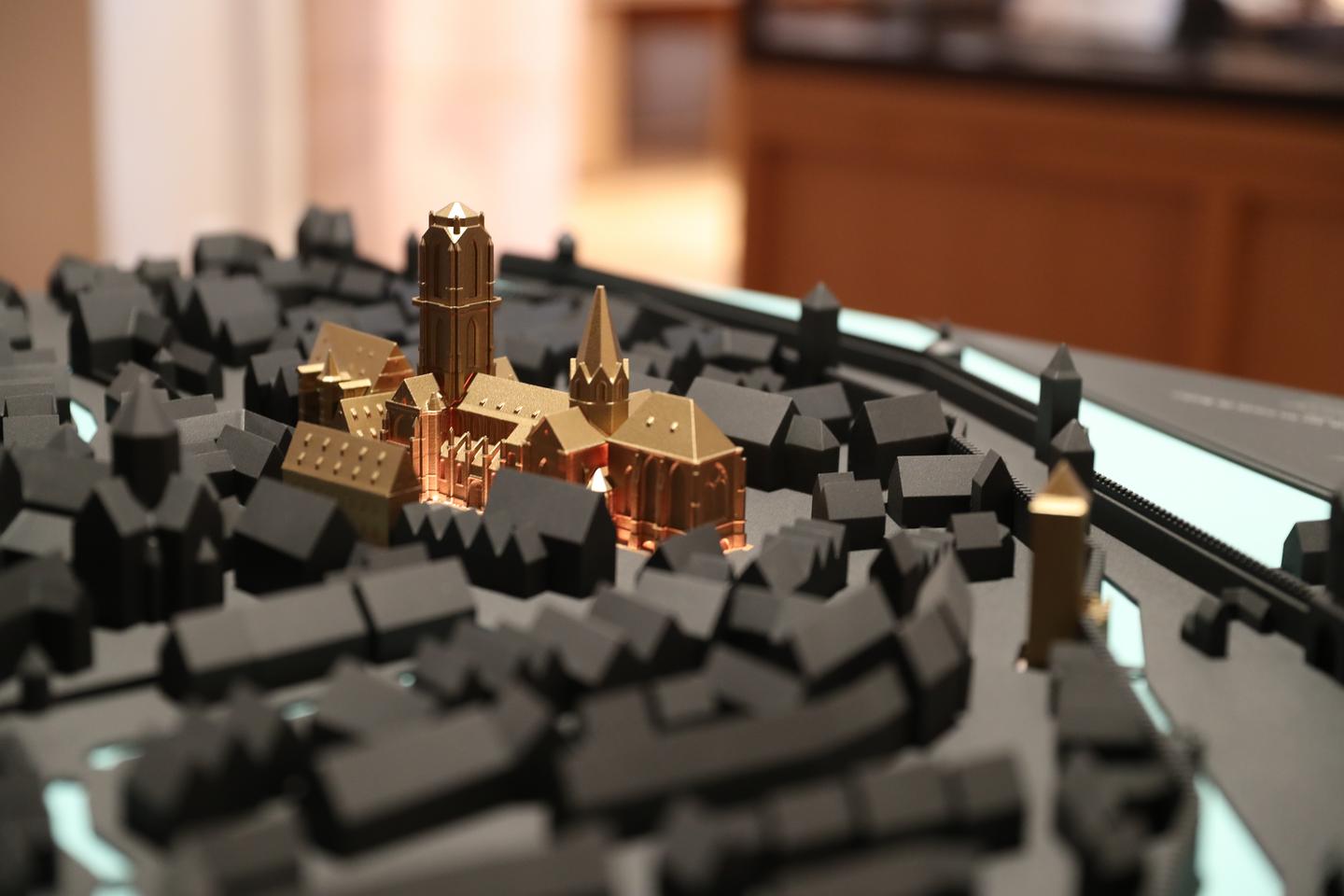
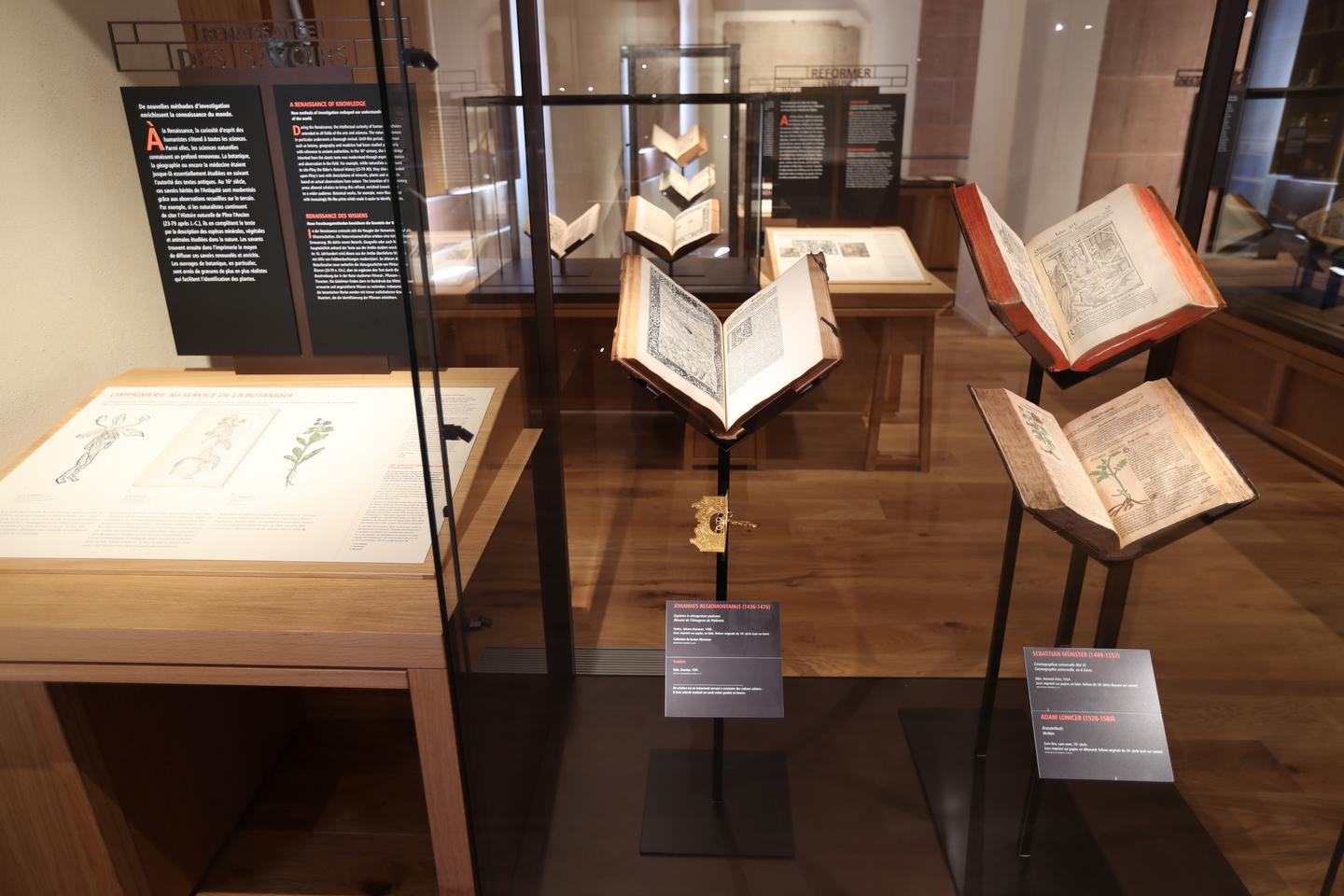
The Church and the Catholic religion were part of the very fabric of European civilisation, a powerful source of social cohesion. In the 1520s, however, the ideas pioneered by Luther began to spread as humanists started to re-examine their relationship with God.
Discover a selection of religious artefacts, including a 16th-century altar panel and colourful wooden sculptures from the same period.
In 15th-century Europe, the invention of printing was a major historical milestone which made it possible to spread and share ideas on a scale never before seen. Printed books soon replaced manuscripts, handwritten books produced throughout the medieval period by copyists.
This section includes a digital animation explaining the techniques of movable type and the printing press.
The visit route is also available for the youngest thanks to illustrations by the artist Julie Stoehr. Inspired by old engravings, the drawings show certain key moments in the life of Beatus Rhenanus. Aimed at 6-12 year olds
